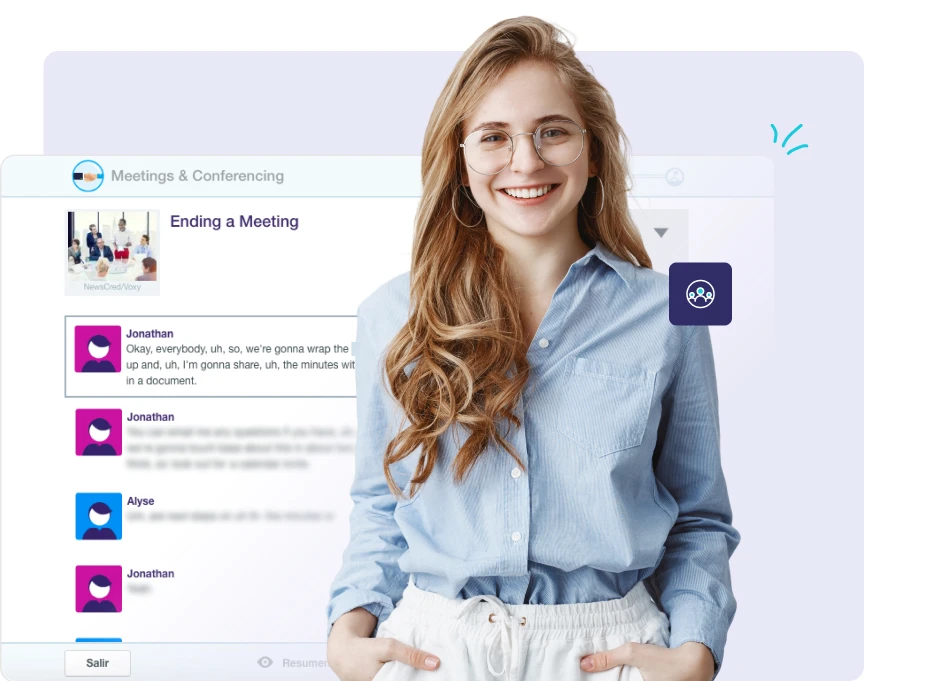Learning agility is a skill that refers to the ability and willingness of people to learn, adapt, and grow in rapidly changing environments. It stands as a crucial skill for companies striving for competitive advantages and market expansion.
A worker who possesses the skill of learning agility is someone who:
- Is open to explore, learn and adapt to new technologies…
- Keeps an eye on trends and innovations in their field, even those not yet implemented in the organization…
- Looks at relevant numbers, stats, and information to drive day-to-day decision-making…
- Has a problem-solving attitude when unexpected situations and downturns occur…
- Knows how to collaborate to proactively build bridges between teams to find solutions to company problems…
And other characteristics that define a person who has autonomy to seek knowledge, prioritize impactful work and grow from mistakes.
Learning agility is correlated with good performance. A study conducted with managers from a global pharmaceutical company showed that those high in learning agility received twice as many promotions over the 10-year period as those low in agile learning.
What are the characteristics of agile learners in organizations?
An agile learner is not someone who knows everything. They are someone who is willing to learn everything work performance demands. To accomplish this, they exhibit a range of characteristics, such as:
Flexibility, which means being open to change and able to adjust one’s thinking and actions in response to new information or circumstances.
Adaptability, which means being able to adapt and thrive in new or challenging situations, based on their work experiences and knowledge.
Curiosity, the mark of someone with a strong desire to learn and explore new ideas, concepts, and experiences. Agile learners are always in a “learning state”, they don’t need a formal learning context to learn.
Self-awareness to understand one’s own strengths and weaknesses, seeking feedback, and actively working on personal and professional development.
Resourcefulness, when someone is able to creatively solve problems and find solutions, even in unfamiliar or ambiguous situations.
Reflectiveness, because they don’t just hoard information, they take time to reflect on past experiences, successes, and failures to extract valuable lessons and insights for future growth.
But how do we build agile teams? An organization can incorporate ways to identify and recruit agile learners in the source – the hiring process. However, the learning agility mindset needs to be constantly refined to ensure that the team’s autonomy in learning aligns with what the company needs.

How HR can help nurture a learning agility culture
#1 Plan in alignment with business goals and challenges
If a company has many agile learners in the team but doesn’t support these people to match their learning eagerness with the skills the company needs… That’s wasted potential!
In the editions of the Linkedin Learning Report, aligning the learning and development plan with the business needs consistently shows as the top priority for L&D professionals.
Focusing the strategy on meeting the business needs makes learning more effective, because people learn faster when there are real challenges to be tackled and there’s a tangible reason to learn.
This alignment is only possible with a solid process in place, an evergreen cycle of assessing the present circumstances alongside a forward-looking vision of the trends for the future, wherein individuals consistently engage in learning to bridge any gaps and achieve their objectives.

Since it’s not easy to have a grasp of all the skills the organization needs in all the departments, consider designating a learning agility champion for every team.
These champions would be responsible for translating what business success means for their team specifically.
L&D pros then connect periodically with these individuals to discuss the competencies that need to be developed to advance in the short, medium, and long terms, aligning skills needed to reach business goals across all departments.
#2 Offer diverse learning opportunities
Agile learners thrive on autonomy to ride their learning paths at their own agile pace. Organizations can meet these avid learners where they’re at (everywhere!), providing a variety of learning resources and opportunities.
Allow people to choose the learning methods that best suit their schedules, preferences and work needs, which can include:
- Online classes in a upskilling platform that cater to different schedules and learning styles
- Mentoring programs
- Knowledge sharing initiatives
- In-person networking opportunities and industry events
- Job rotation opportunities and Internal mobility roles – agile learners are usually curious to understand the organization as a whole and can apply that mindset to solve different problems in the organization.
#3 Prepare the leadership
Encouraging a culture of learning agility extends beyond the L&D team’s sole responsibility. Your team naturally looks to management for guidance through example.
Incorporate within your leadership development initiatives an emphasis on leading to harness and improve the potential of people, including agile learners, to enhance business performance.
This might implicate a shift in mindset among leadership, since agile learners can dig deep and have ideas that challenge the way things are made.
When managers have their egos in check and the whole team embrace learning agility, they can engage in constructive dialogues even when they have different opinions, viewing them as opportunities to grow the business rather than threats.
#4 Nurture continuous feedback
Some voices in the market say annual performance reviews are outdated. With or without this process, strive for a culture where feedback isn’t confined to formal periodic reviews but is woven into everyday interactions and the team feels comfortable both giving and receiving feedback.
This requires work on the power skills like communication, problem solving and emotional awareness to take feedback and turn it into continuous improvements.
#5 Provide support and resources
Communicating a company culture to the employees is different from embodying one authentically.
It’s essential for your employees to genuinely sense that the company nurtures improvement and continuous learning beyond mere rhetoric, presentation decks and emails.
Therefore, a question arises: Is the organization allocating the requisite resources, budget, and time slots to cultivate learning agility effectively? Does the organization offer clear career growth opportunities?
Your agile learners will test new things and analyze the process. But what if they leave the company, would it mean everything is lost?
To make sure that doesn’t happen, have processes and tools like Guru to streamline, register and unite collective learning points and experiments, which can be a learning resource for the whole team.

#6 Measure and track progress
As a data-driven HR professional you probably track many KPIs and metrics to gauge the effectiveness of your learning strategy.
The metrics that will show the state of the learning agility will involve metrics beyond the basics like engagement and completion rates, including internal mobility rates and business goals reached after projects.
#7 To drive innovation, encourage risk-taking
Some organizations depend on constant innovation to thrive in a competitive market. But innovation doesn’t happen in an organization that is not open to trial and error.
Encourage risk-taking to create a safe environment where employees feel comfortable experimenting with new ideas. Encourage calculated risk-taking by providing guidance on how to assess and mitigate risks while encouraging a willingness to learn from failure.
#8 Go online and asynchronous
Oftentimes agile learners will be busy learning – and also executing on what they learn.
Meet these worker’s busy schedules by offering online learning platforms that allow the agile learner to autonomously and asynchronously make best use of their time to advance their skills.
#9 Give agile learners opportunities to… teach!
Agile learners exhibit high levels of engagement within the company and are enthusiastic about taking on business challenges. Their energy and drive can have a contagious effect on others in the team, making them a driving force and a source of inspiration.
In addition to offering learning opportunities, organizations should also create opportunities for agile learners to mentor others or participate in job shadowing and onboarding experiences.
#10 Provide communication and language skills training
Communication and language skills training are essential components of fostering a culture of learning agility, especially for big teams spread around the globe.
Investing in communication and language training programs empowers employees to collaborate more effectively, share knowledge and expertise, offer meaningful feedback and coaching, engage in open dialogue, and navigate change more successfully.
Such investment ensures that language barriers do not hinder employees from freely expressing their ideas and contributions.
Voxy supports corporate customers in over 150 countries with access to live language education that empowers people to enhance their performance and achieve business goals through effective communication. Click here to schedule a 15-minute assessment session to discuss your company’s language training needs.





